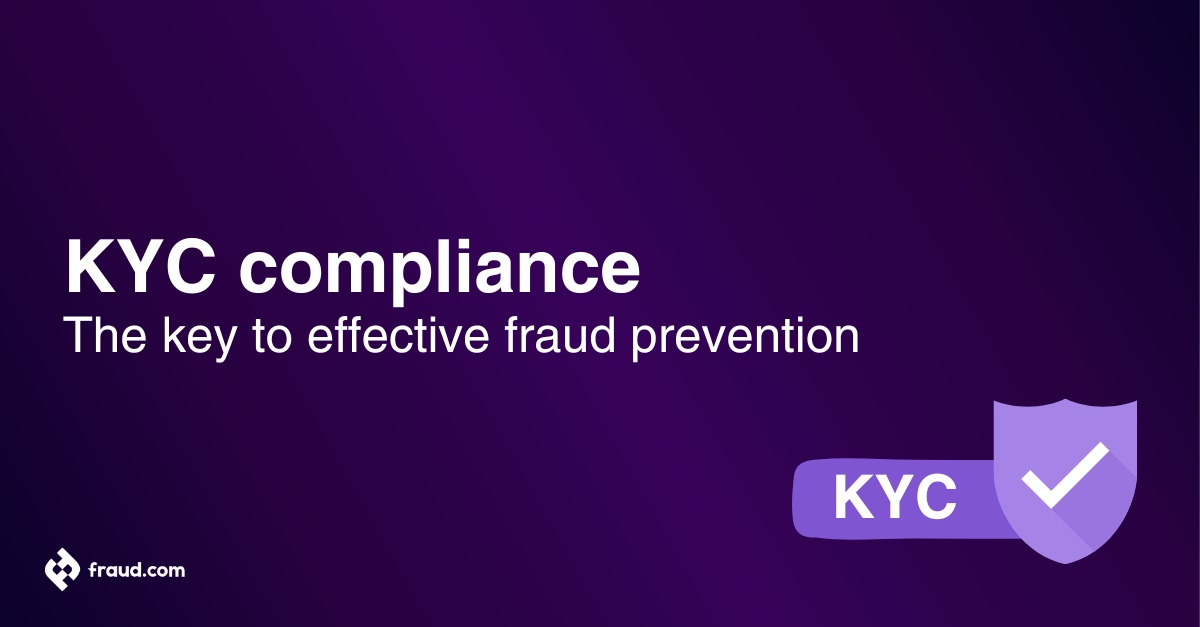In today’s rapidly evolving digital landscape, application fraud poses a significant and growing threat to the financial sector. Fraudsters are continually refining their tactics, targeting financial institutions with sophisticated schemes that can have severe consequences for both businesses and their customers. As a result, it has become increasingly imperative for organisations to adopt robust strategies and solutions to effectively fight application fraud.
This article will dive into the various aspects of application fraud, exploring its impact on the financial industry and highlighting the need for cutting-edge detection and prevention measures. We will also discuss how to empower financial institutions to stay one step ahead of fraudsters, ensuring the safety and security of their customers, assets, and reputation. Join us as we navigate the complexities of application fraud and uncover the solutions necessary for a secure financial future.
Table of Contents
ToggleWhat is application fraud?
Application fraud is a deceptive practice where fraudsters submit forged or falsified information to gain unauthorised access to financial products and services such as loans, lines of credit, mortgages and bank accounts. This type of fraud troubles financial institutions and can result in significant financial losses, reputational damage, and destruction of customer trust. Perpetrators may use stolen or synthetic identities, manipulate personal details, or create entirely fictitious personas to deceive banks and lenders.
As fraudsters continue to evolve their techniques, it becomes increasingly crucial for financial service providers and banks to implement robust strategies and cutting-edge technology solutions to detect and prevent application fraud effectively. Understanding the implications of application fraud is the first step in building a resilient defence against this deceptive threat.
Types of application fraud
Financial institutions face a multitude of risks in the form of application fraud. These fraudulent activities can result in significant financial losses and damage to the organisation’s reputation. To effectively combat these threats, it is essential to understand the various types of application fraud, which can be categorised into three primary forms: first-party, third-party, and synthetic identity fraud.
1. First-Party application fraud
First-party fraud occurs when an individual knowingly provides false information on their application to obtain financial products or services. This type of fraud may involve misrepresenting income, employment, or credit history to gain access to apply for a loan, credit card, or other financial services that they otherwise would not qualify for. Among various forms of application fraud, credit card application and loan application fraud stand out as the most prevalent methods employed by fraudsters due to their potential for substantial financial gains.
Financial institutions must remain vigilant in verifying the accuracy of personal data submitted during the application process to prevent first-party fraud. Strategies to tackle first-party fraud include implementing stringent application verification processes, utilising data analytics to identify inconsistencies, and maintaining a robust Know Your Customer (KYC) program.
2. Third-Party application fraud
Third-party fraud involves the unauthorised use of another individual’s personal information, such as name, address and phone number, to apply for financial products or services. In this scenario, fraudsters may use stolen or forged documents, such as birth certificates, driver’s licenses, or social security numbers, to deceive financial institutions into granting them access to credit, loans, or other services.
To combat third-party fraud, financial institutions should employ multi-factor authentication, and biometric authentication, and employ real-time fraud detection systems like aiReflex for application fraud to analyse behavioural patterns and identify potential fraud.
3. Synthetic identity fraud
Synthetic identity fraud is a sophisticated type of fraud where criminals create an entirely new identity by combining real and fabricated information. This hybrid identity may utilise a fictitious name, address, or date of birth. The fraudster then uses this synthetic identity to open new accounts, obtain credit, or commit other fraudulent activities.
Detecting synthetic identity fraud is challenging due to its complex nature. Financial institutions can adopt advanced link and network analysis tools, utilise machine learning algorithms for anomaly detection, and collaborate with credit bureaus and other data sources to share information about known synthetic identities.
In conclusion, understanding the different types of application fraud and their unique characteristics is crucial for financial institutions to implement effective fraud prevention systems and strategies. Leveraging advanced technology solutions like aiReflex, alongside robust KYC processes, data fraud analytics, and collaboration with other financial institutions and data sources, can significantly enhance the organisation’s ability to detect and prevent these fraudulent activities.
Application fraud prevention
As financial institutions face an increasingly sophisticated array of application fraud tactics, leveraging cutting-edge technology becomes essential in preventing losses and maintaining a balance between fraud prevention and customer experience. In this section, we will discuss critical innovations and tools that have emerged as game-changers in application fraud prevention and detection.
- Machine learning and artificial intelligence (AI): Machine learning algorithms and Artificial Intelligence models have proven effective in application fraud detection by analysing vast amounts of data to identify patterns, anomalies, and trends indicative of fraudulent activity. These advanced technologies can adapt and learn from new data, improving their accuracy over time.
- Robust identity verification: Implementing a strong identity verification procedure enables organisations to effectively verify the identity of the applicant and make sure that they are using genuine identity documents and that it is the real person applying for the product or service.
- Biometric authentication: Biometric authentication methods, such as fingerprint scanning, facial recognition, and voice analysis, can significantly boost the security of onboarding processes. By confirming the customer’s identity through unique physiological traits, financial institutions can reduce the risk of identity theft and account takeover.
- Blockchain and distributed ledger technology (DLT): Blockchain and DLT offer secure and decentralised data storage, making it challenging for fraudsters to tamper with or alter records. Additionally, these technologies enable real-time sharing of information across multiple organisations, enhancing collaboration in fraud detection and prevention.
- Internet of Things (IoT): IoT devices and sensors can gather crucial data in real time and help financial institutions monitor and analyse customer behaviour for early detection of fraud. Moreover, IoT can facilitate multi-factor authentication, such as physical device possession, adding an extra layer of protection.
- Application programming interfaces (APIs): APIs can foster seamless integration between different systems and data sources, equipping financial institutions with a holistic view of customer information. This comprehensive insight enables better-informed decisions and faster fraud detection.
- Risk fraud scoring and predictive analytics: Using advanced statistical techniques and data mining, financial institutions can assess the risk associated with each application and generate an alert. By assigning risk fraud scoring, organisations can prioritise high-risk fraudulent applications for manual review, streamlining the decision-making process.
- Big data and data analytics: The ability to process and analyse large volumes of structured and unstructured data is critical in identifying potential fraud. Big data analytics can help uncover hidden relationships and trends, enabling financial institutions to make informed decisions, take proactive measures, reduce false positives and avoid data breaches.
- Cross-channel fraud detection: As fraudsters often exploit multiple channels to commit application fraud, financial institutions need to adopt cross-channel fraud detection and prevention strategies, also known as fraud orchestration. Integrated tools that analyse data from various channels can provide a complete view of customer behaviour, helping to identify inconsistencies and potential fraud investigated by the anti-fraud team.
In conclusion, the role of technology in combating application fraud cannot be overstated. Financial institutions must continually invest in and embrace innovative tools and techniques to stay ahead of fraudsters and ensure the security of customer information and transactions. By leveraging advanced technologies such as AI, blockchain, and biometric authentication, organisations can effectively protect their assets and enhance customer trust in their services.
Adopting advanced solutions for sustainable application fraud detection and prevention
In today’s rapidly evolving digital landscape, financial institutions must adapt and innovate to stay ahead of the curve. Embracing advanced application fraud prevention and detection solutions is crucial for long-term success and sustainability. By investing in cutting-edge technologies like machine learning and advanced analytics, organisations can effectively identify, track, and prevent fraudulent activities without compromising the customer experience.
Adopting advanced solutions for application fraud prevention systems empowers financial institutions to keep pace with the ever-changing tactics of fraudsters, ensuring enhanced security and customer satisfaction. As a result, businesses can maintain their competitive edge, foster customer trust, and ensure the continued growth of their financial ecosystem.
In conclusion, protecting financial institutions against application fraud requires ongoing vigilance and a proactive approach to fraud management. By implementing advanced solutions, organisations can build a resilient financial ecosystem that safeguards their business from fraudsters, ensuring long-term success and stability.
With its comprehensive suite of features and capabilities, aiReflex provides a robust and reliable solution for tackling application fraud head-on. By leveraging the power of machine learning and advanced analytics, financial institutions can confidently protect themselves and their customers from the ever-present threat of fraud.
As the digital landscape continues to evolve, businesses must remain vigilant and proactive in their application fraud prevention and detection efforts. By investing in advanced solutions like aiReflex, financial institutions can secure their future, ensuring lasting success in an increasingly competitive market.
Embracing advanced technologies and continuously updating fraud management systems will also help organisations stay one step ahead of fraudsters who constantly find new ways of committing application fraud. In the long term, this will not only improve customer experience, trust and loyalty but will also reduce the operational costs associated with fraud investigation and mitigation.
In summary, the key to a sustainable and secure future in the financial sector lies in adopting advanced solutions for application fraud prevention and detection. By capitalising on machine learning, advanced analytics, and other innovative technologies, financial institutions can stay ahead of fraudsters, protect their business, and maintain customer trust, fostering a strong and resilient financial ecosystem.
Preventing application fraud with aiReflex
Application fraud is a growing concern for financial institutions worldwide. With the rise in digital transactions and an increasing reliance on online financial services, the need for effective fraud detection and prevention solutions is now more important than ever. aiReflex offers a comprehensive and advanced solution specifically designed to combat application fraud, empowering organisations to take a proactive approach to fraud prevention.
Leveraging advanced machine learning analytics, aiReflex enables financial institutions to accurately identify and prevent fraudulent activities, ensuring a secure and seamless experience for genuine customers. With its powerful link and network analysis capabilities, aiReflex can efficiently detect and investigate organised fraud rings, providing businesses with the tools they need to protect themselves and their customers from fraud.
By integrating aiReflex into their existing ecosystem, financial institutions can benefit from real-time decision-making capabilities and unmatched accuracy in detecting potential fraud. Through its innovative features and ease of integration, aiReflex offers an unparalleled solution for preventing application fraud, ensuring the security and success of financial institutions in today’s digital world.









